Do you love glitter but worry about its impacts on the environment? Join us as we explore why most glitter is harmful to the environment and give you some tips so you can easily make the switch to glitter that’s not only sparkly fun for you and the kids, but good for the environment too! We’ll also be sharing 3 simple craft activities for kids with biodegradable glitter using things you can easily find around your home or early learning service.
*Please note, this resource does include information on mica, a sparkling mineral that is often offered as an alternative to glitter.
Are you ready to make the pledge to #sparkleresponsibly at your early childhood service?
Download and complete the Little Sprouts Sparkle Responsibly Pledge
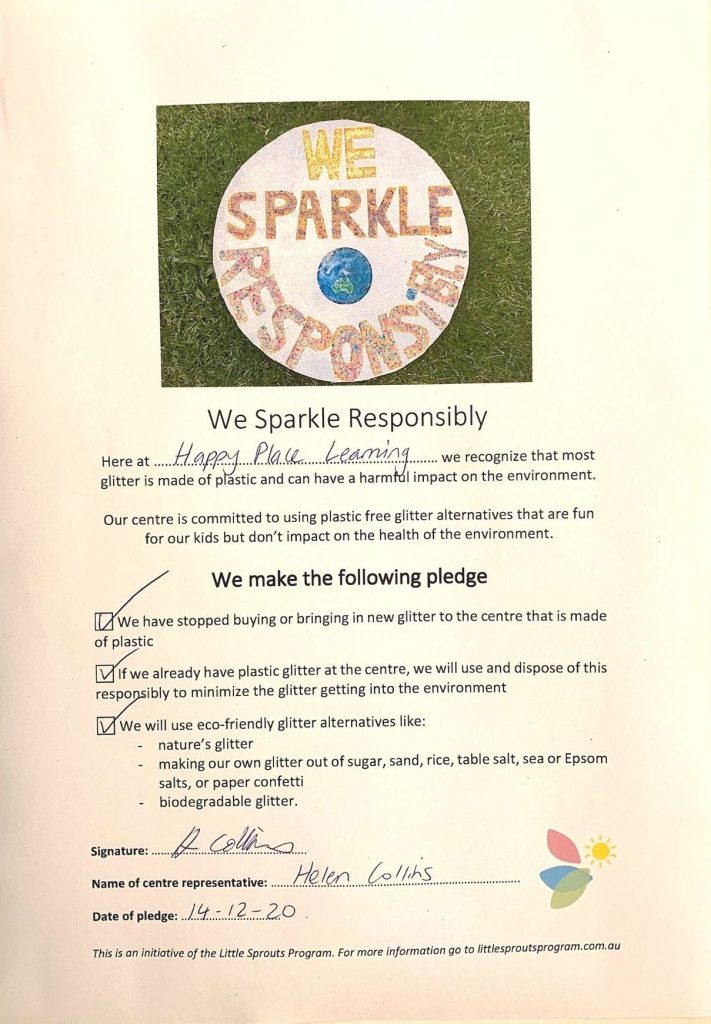
Display and share the pledge with your centre community and update your progress towards becoming a plastic-free glitter centre in your Quality Improvement Plan. Share your pledge photos with us on social media @thelittlesproutsprogram, #sparkleresponsibly.
Join Carolyn from the Little Sprouts Program as she dives into the world of glitter.
This video covers the following topics:
1. (00:40) Microplastics – why most glitter is harmful to the environment
2. (02:47) Switch to eco-friendly glitter alternatives
3. (03:18) Things to be aware of with biodegradable glitter
4. (03:48) What does biodegradable mean?
5. (04:06) 10 tips to tell if you’re going to get biodegradable glitter or just plastic litter
6. (06:19) A quick intro to Bioglitter® and Glitterazzi
7. (07:26) Three fun biodegradable glitter craft activities for kids using Bioglitter®
8. (07:38) Environmentally friendly glitter snow globes activity
9. (08:28) Putting your child’s name or handprint in eco glitter activity
10. (09:17) Making biodegradable glitter cardboard roll flowers
11. (10:19) Take home message.
So, what’s the problem with glitter?
If you’re an early childhood educator or parent, I’m sure you’re aware of the glitter hurricane effect. Glitter is sticky, small and spreads like magic. Even after a lengthy clean up you can find it months or even years down the track. After a glittery festival or art project, these bits of microplastic have a very high chance of getting into the environment. For something that provides enjoyment for only a short period of time, glitter can wreak havoc on the environment for 100’s of years after. Compared to other waste streams produced by early childhood services like nappies and other plastic, glitter is not as big a problem. But it’s one of the easiest waste streams to switch to an eco-friendly alternative.
Most glitter is made of plastic. Mostly polyethylene, the same plastic found in plastic bags and lots of other plastic products. And it’s a microplastic. These are plastics that measure less than 5mm. Microplastics are almost impossible to remove/clean up entirely once they enter the environment. Glitter can be washed down the drain and because it can pass through water filtration or wastewater treatment facilities, it can easily make its way out into the ocean.
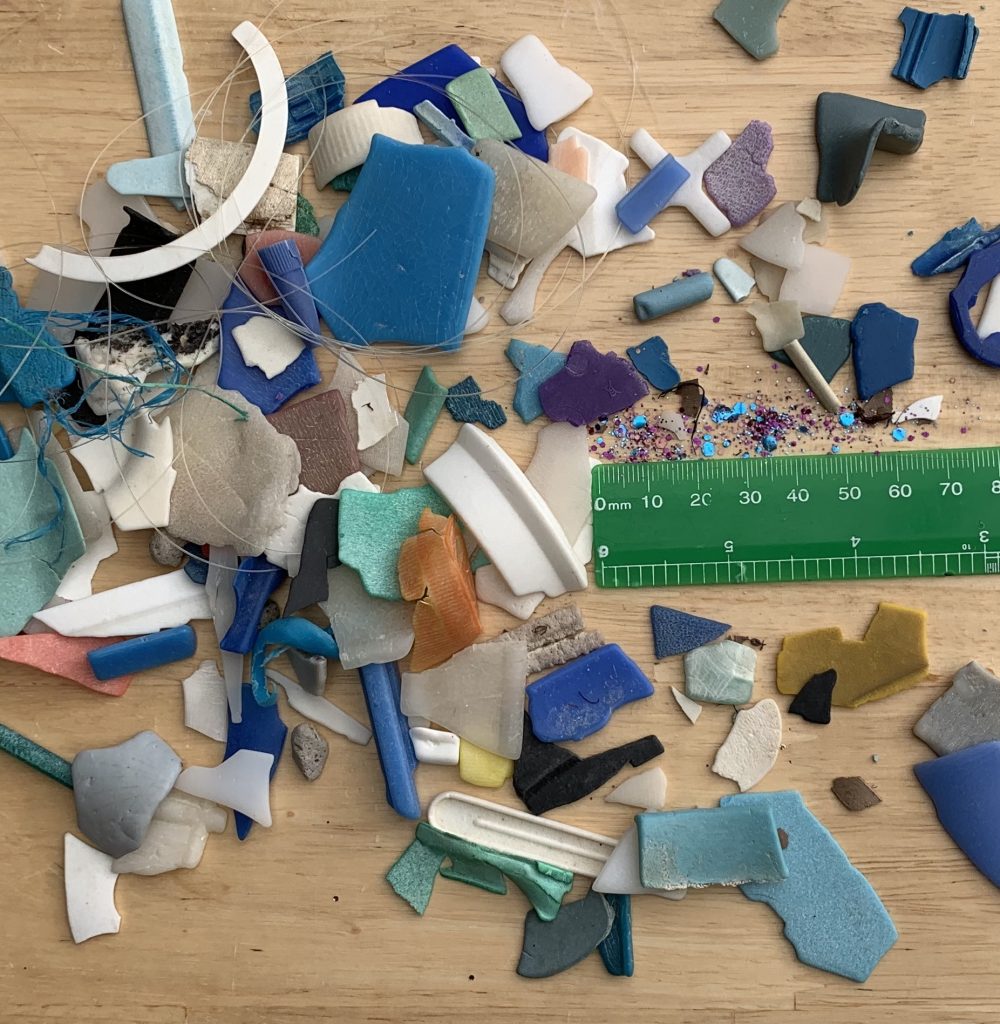
Glitter like other microplastics can carry harmful bacteria and chemicals that are ingested by small animals and enter the food chain. If mussels, fish, seabirds and other marine animals ingest glitter and other microplastics, this can impact on their health and the health of humans if we choose to consume them.
Remember microbeads that were being used in shower gels? They’re a microplastic too and Australia is well on its way to phasing them out. Isn’t it time we do the same with plastic glitter?
How can you fulfill your love of glitter without damaging the environment?
By refusing to buy or use plastic glitter and switching to eco-friendly alternatives you are helping to reduce microplastic pollution created by glitter and you’re making it clear to glitter manufacturers, that we expect better for the environment!
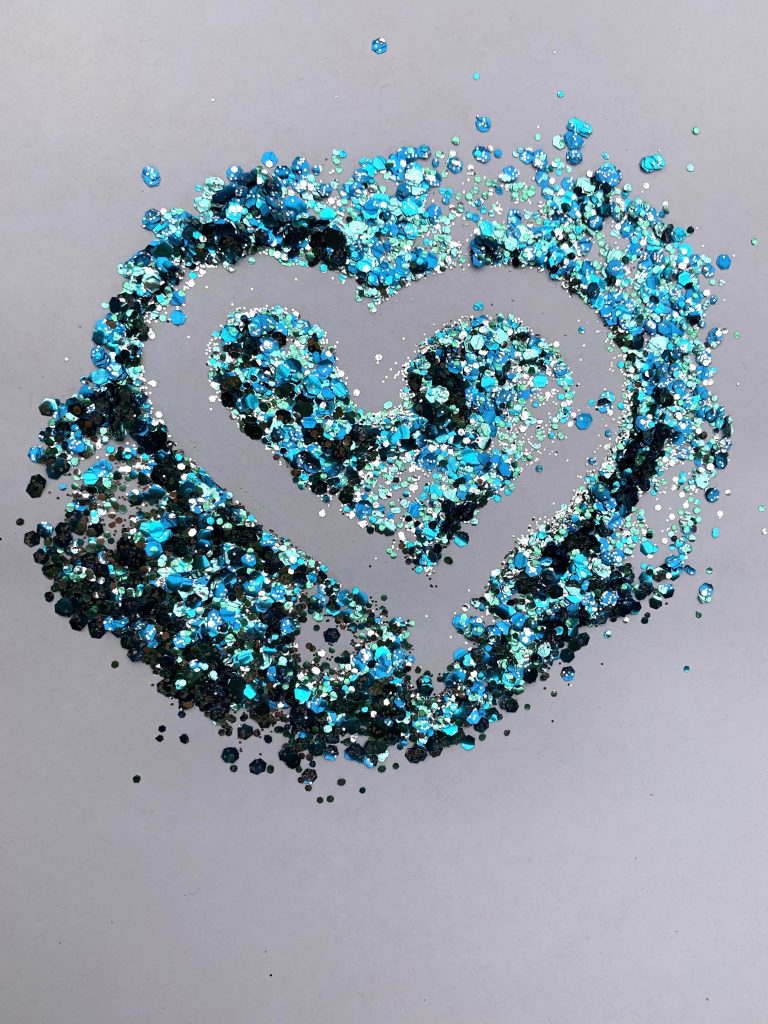
What should you do with the plastic glitter you already have?
So, you want to make the pledge to Sparkle Responsibly, but you know there is still a lot of unused plastic glitter hiding in storage cupboards. What should you do with this glitter?
Remember that it’s OK to make changes gradually and the most important thing is to commit to stop buying/bringing in more plastic glitter to the centre. Get creative and involve your staff and children in figuring out what to do with the plastic glitter you still have. Engage children in the process of figuring out what to do with the glitter to prevent it spreading into the environment and waterways.
Here are some ideas:
- The last thing you want to do is throw the plastic glitter into the rubbish. Similarly, DO NOT flush the glitter down the drain or toilet. Even if you seal it in a container and throw it out, it may get crushed at some stage in landfill allowing the glitter to escape into the environment. If you’re not sure what to do with it right away, hide it somewhere safe where no one will use it.
- Can you donate the plastic glitter to someone that can ensure they will use it responsibly and turn it into long-lasting items? Perhaps you could donate it to a local artist to turn it into funky glitter resin earrings, or an eco-friendly business that can deal with the glitter properly? Be cautious with donating plastic glitter to families, other centres or schools unless they can ensure it won’t get out into the environment.
- The key to upcycling plastic glitter is to turn it into a long-lasting, permanent item that hopefully won’t end up in the bin. Here is some inspiration for upcycling glitter:
- Use the glitter to make a ‘We Sparkle Responsibly’ sign. Display this eye-catching sign at the front entrance of your centre. It will be a good conversation starter with families and other visitors. Make sure to seal the top coat of glitter with a layer of glue so the glitter doesn’t fall off the sign.
- Put the glitter into clay and make decorative sparkly gifts
- Candleholders – The blog of ILOVETOCREATE.COM guide you through making double sparkle, no-shed candle holders
- Piony and Ink DIY glitter ring bowls
- 9 easy glitter wall art ideas from DIYtomake.com
- Color Made Happy DIY glitter mason jars craft
- Resin Crafts DIY glitter resin cacti
- Pinterest has some fantastic inspiration on how to make glitter Christmas ornaments.
Please share your crafty glitter pics with us. We’d love to see what you create @thelittlesproutsprogram, #sparkleresponsibly.
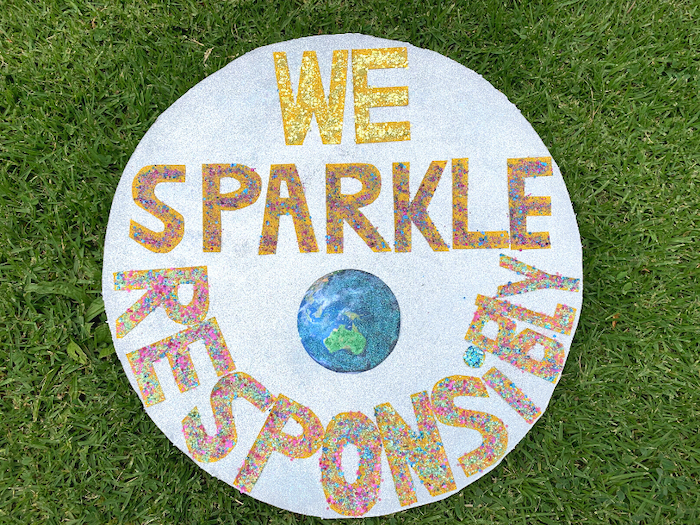
Make your own glitter!

The best alternative to buying or using plastic glitter is to make your own. You can make your own glitter easily from salt crystals, sugar, sand, or rice and food colouring, or make paper confetti (be sure to use plastic-free paper). You can also make nature’s glitter by picking small flowers and other items around your local environment.
Switch to buying biodegradable glitter
Another option is to get your hands on biodegradable glitter. Biodegradable glitter is more expensive than plastic glitter, but it doesn’t cost the health of the earth. As it costs more, you can save money by using biodegradable glitter a little more sparingly and decide on some special things to make with children!
How can you tell if the glitter is going to be biodegradable and not just plastic litter?
Firstly, let’s get clear on what biodegradable means. Whatever glitter you buy (or use) whether it’s plastic or biodegradable glitter, is made of polymers. Complete biodegradation occurs when none of the original polymer remains – when it has been broken down to carbon dioxide, methane and water with the help of microorganisms. There’s a lot of misleading information and greenwashing in the glitter industry so it helps to have some background knowledge before entering the biodegradable glitter world.
Here are our top 10 tips to tell if you are going to get biodegradable glitter, or just plastic litter
1. The glitter biodegrades quickly in a natural, freshwater environment
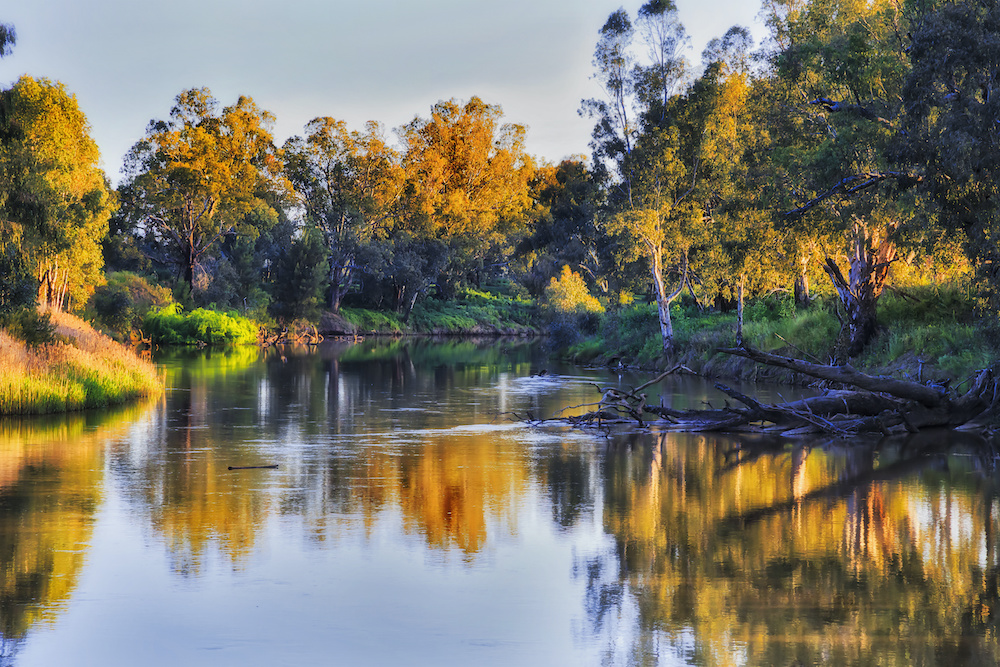
The number one and most important thing to look out for is that the glitter has passed independent certification that the majority of the glitter (over 90%) biodegrades over a short period of time (less than 56 days) in a natural, freshwater environment. This is the highest tick of approval for biodegradable glitter at this time.
2. What is the glitter made of?
Biodegradable glitter is mostly made of plant cellulose, commonly Eucalyptus cellulose.
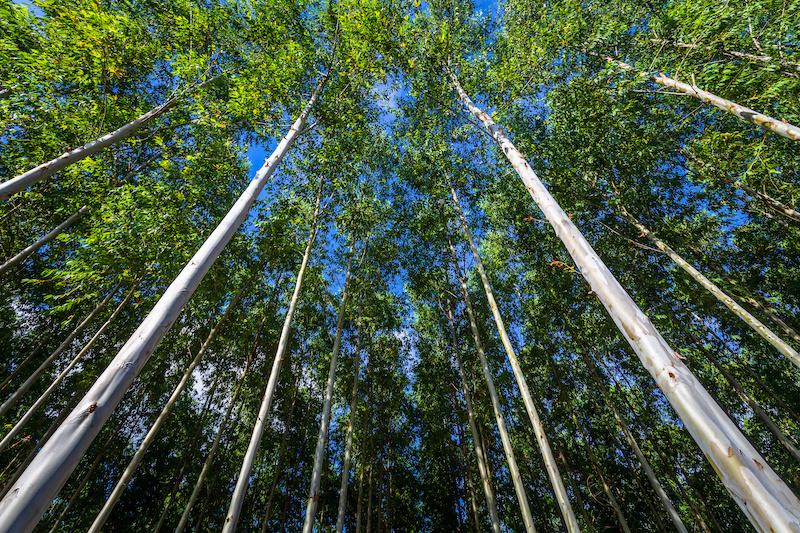
3. How long does the glitter take to break down in the natural environment?
How long it takes for glitter to break down in the environment is an important factor. Whether the glitter is labelled as natural, compostable, degradable, or biodegradable doesn’t matter if it takes 100 years to biodegrade in the environment! If just a small percentage of the glitter biodegrades or it needs special industrial composting conditions to biodegrade, then it’s not eco-friendly in terms of letting it loose in the environment.
4. What conditions does the glitter need to break down in the natural environment?
Glitter polymers that are only compostable or only biodegrade in certain conditions like in soil or wastewater are still really microplastics as you know very well my friends, it is hard to control which environment the glitter ends up in once it gets loose!
5. Holographic glitter is currently not biodegradable
To our knowledge at the time of writing this post, holographic glitter is currently not 100% biodegradable. If you have new information about this, please feel free to share in the comments below.
6. Look for the hexagonal glitter shape
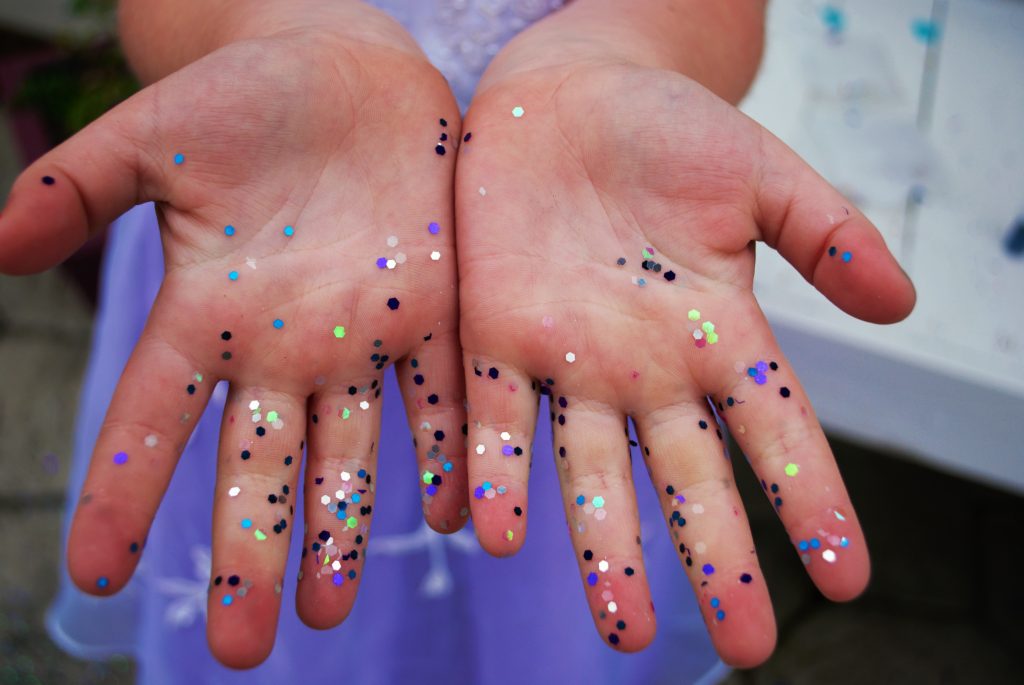
7. Biodegradable glitter comes in less of a range of colours than plastic glitter
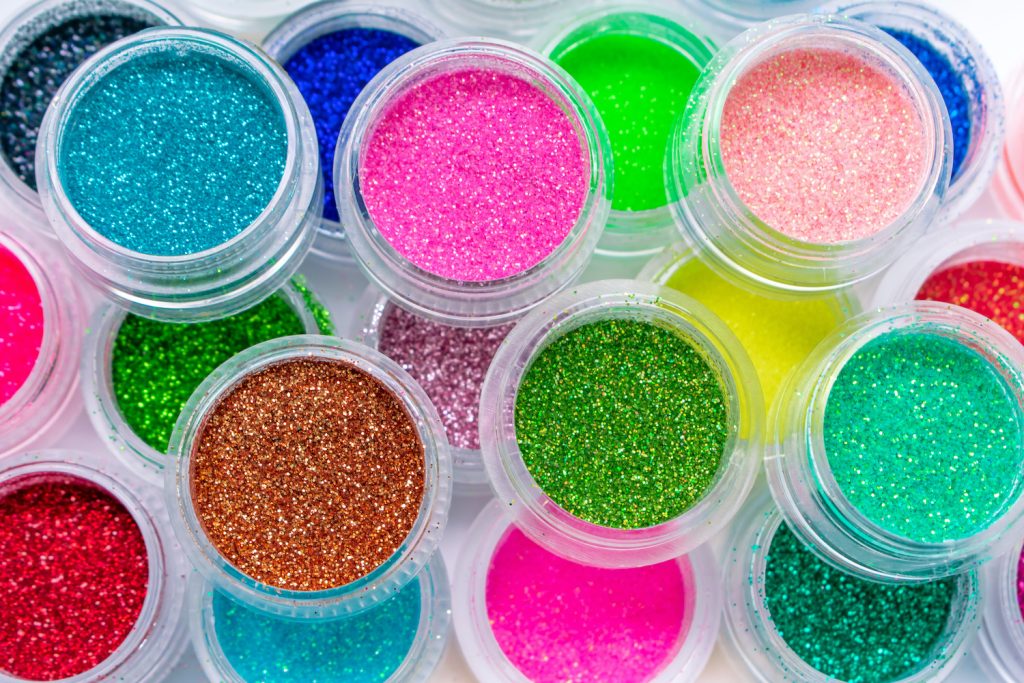
8. Biodegradable glitter will feel softer than plastic glitter
9. Biodegradable glitter will cost more than plastic glitter
The price will go down as there is more demand for eco-friendly glitter. At the time of writing this post, biodegradable glitter can cost 6-8 times more than plastic glitter.
10. Avoid glitter marketed as only compostable
Plastics labelled as compostable typically require certain conditions that occur in industrial composts, with prolonged temperatures of above 50°C to be completely broken down. Such conditions are rarely if ever met in the natural environment.
Where can you find biodegradable glitter in Australia?
Bioglitter® are leading the way in the biodegradable glitter industry. If you’re buying certified biodegradable glitter in Australia, chances are it’s Bioglitter ®. For a list of Bioglitter® stockists worldwide see https://www.discoverbioglitter.com/where-can-i-buy-bioglitter/. The Bioglitter® used in the kids’ craft activities in this post is from Melbourne-based business, Glitterazzi. We are not affiliated or sponsored by Bioglitter® or Glitterazzi in any way. But we love what they do!
So how does Bioglitter® work? It doesn’t just dissolve in water. It needs environmental bacteria and other microorganisms to biodegrade. The speed of breakdown depends on environmental factors like heat, moisture, and how many little microbes there are.
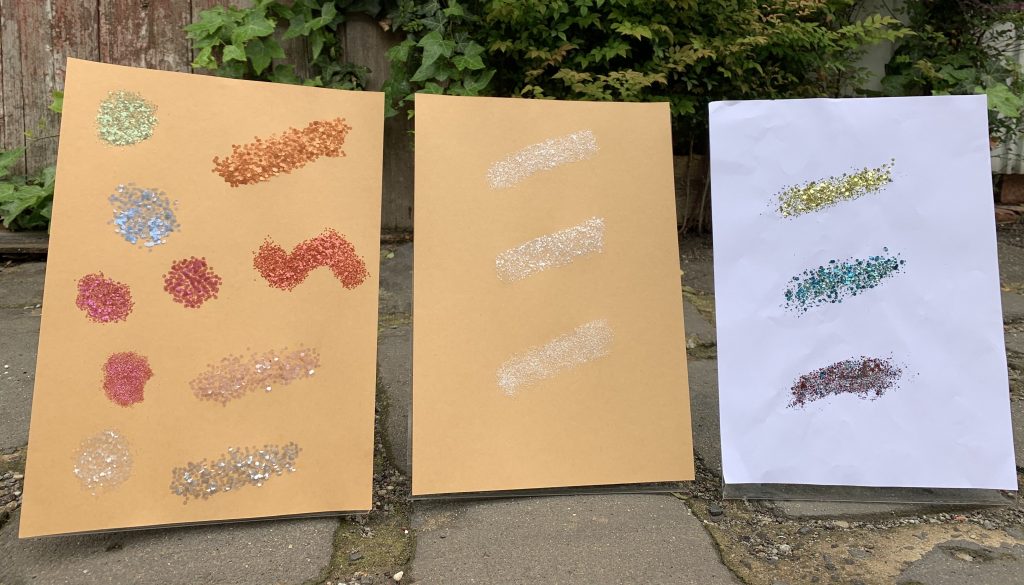
Bioglitter® currently offers two types of biodegradable glitter – Bioglitter® PURE and Bioglitter® SPARKLE. To find out more about the differences between these products see https://www.discoverbioglitter.com/#section_1. The tricky thing is that most sellers of Bioglitter® rename the glitter so it’s sometimes hard to know what type of Bioglitter® they are selling. If you’re not sure, just check with your supplier. If you have the option to choose between these two types of glitter, choose Bioglitter® PURE as it has achieved guaranteed certification that it biodegrades in a natural freshwater environment. They describe this glitter as “decomposes like a leaf in the natural environment to leave no trace.” Bioglitter® SPARKLE is following close behind (only 3% off meeting the Biodegradable WATER certification target). This means that Bioglitter® SPARKLE still contains some microplastic that does not biodegrade quickly in a natural, freshwater environment.
The cosmetics industry jumped on the biodegradable glitter train a while ago so you’ll see lots of glitter available for cosmetics and personal care use. Early learning services will be happy to know there is also a Craft Bioglitter® in the SPARKLE range. We are very excited that they are launching their new SPARKLE GC range for decorative and craft activities in January 2021. This is the first of their Bioglitter® SPARKLE range to reach freshwater biodegradable certification.
Three fun kids craft activities with Bioglitter® PURE
Join Carolyn as she takes Bioglitter® PURE for a test drive with three fun, environmentally friendly glitter craft projects you can do with kids.
Eco-friendly glitter snow globe
Learn how to make your own snow globe using biodegradable glitter and items you have around your house or early childhood service
Capturing a child’s name or handprint in bio glitter
Putting a child’s name or handprint in glitter captures a special moment in time. You have the option to frame it as a special keepsake.
Cardboard roll eco glitter flowers
This is any easy activity to repurpose old toilet rolls or paper towel rolls lying around.
We used Who Gives a Crap toilet rolls for this activity. Not only are they kind to trees, their products come with no plastic and 50% of profits are donated to help build toilets. Now that deserves a round of applause.
If you try any of the craft activities in this post, we’d love to see what you make. Please share with us on Facebook and Instagram @thelittlesproutsprogram, #sparkleresponsibly.
Take home message about biodegradable glitter
If there is one thing to take from this post it is…don’t focus too much on what the glitter is called. Whether it be labelled as compostable, plastic-free glitter, or biodegradable. But rather on whether it has passed independent certification that it breaks down quickly in a natural, freshwater environment. This is the gold standard of whether a glitter is as eco-friendly as it’s made out to be and proves…it’s not a microplastic.
Do you use biodegradable glitter? What do you use it for? Drop a comment below.
Looking for fun sustainability incursions for children in Melbourne? Our recycled paper making incursion is a favourite with kids and features biodegradable glitter. Find out more.

Written by Carolyn Luder, the Little Sprouts Program Founder and Managing Director.

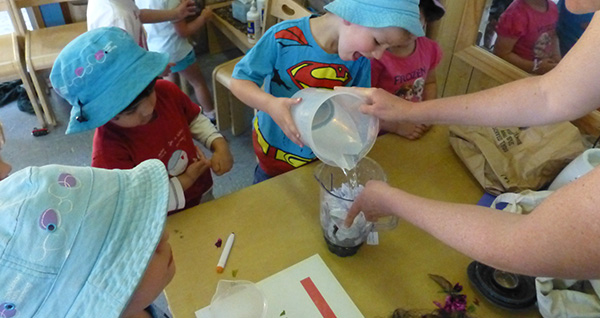

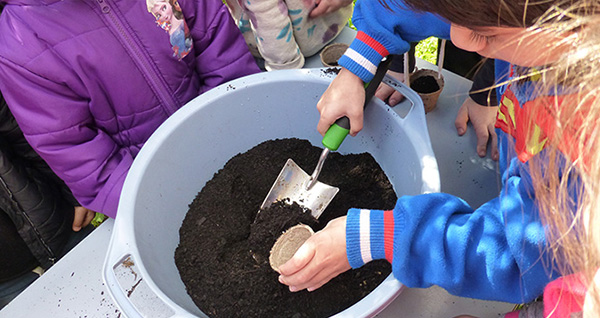
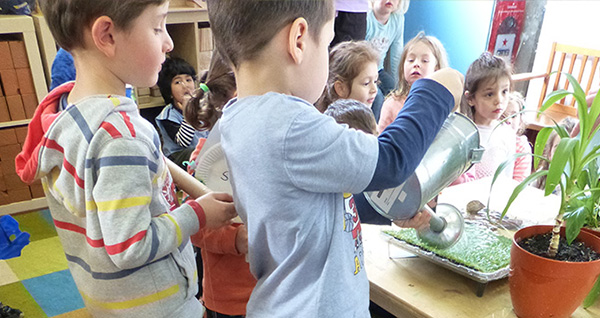
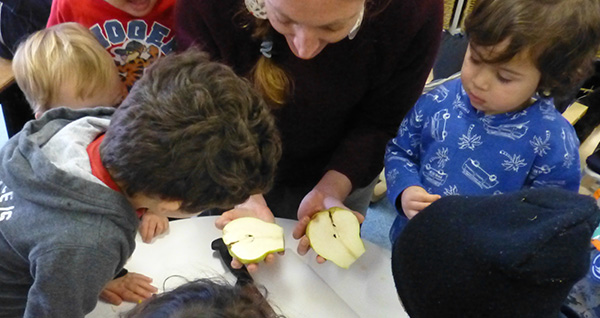
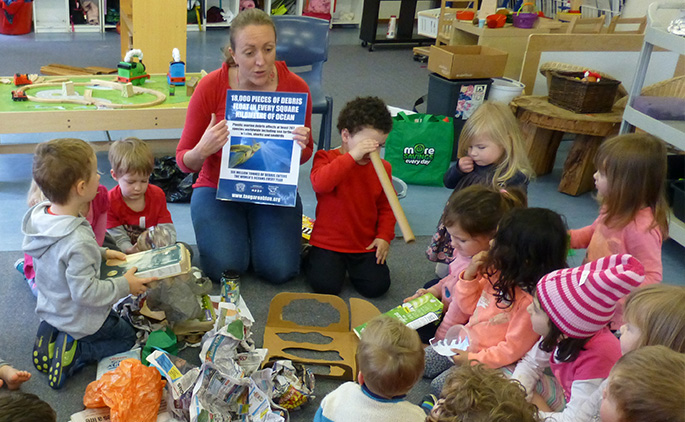
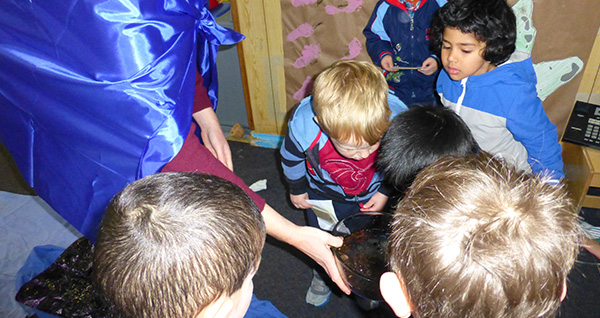
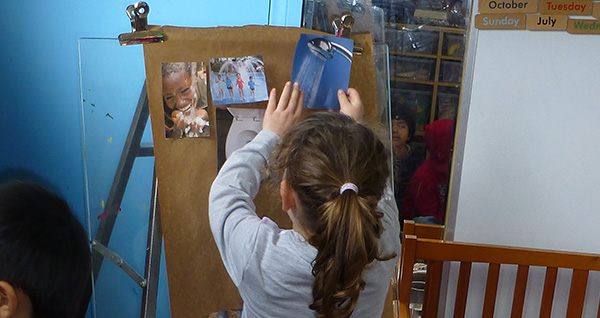

Comments 2
Thank you for your fabulous information. I hope everyone can get on board sooner than later…. awakening to the damage glitter causes to our environment.
My question is how can I responsibly dispose of bulk glitter. I work at a Preschool and over the years have bought glitter in bulk before our “awakening”. So we have large plastic bags full of much glitter. I feel just placing it in landfill in a plastic bag still poses a danger to the environment over time. I have heard that mixing with glue might be an idea….tgat would mean a lot of glue. I thought of sewing it into an old pillow case???
I would appreciate any suggestions you may have.
Thank you
Regards
Dee
Author
Thanks for your feedback and reading this post Dee. You’re not alone with having large stashes of plastic glitter built up over the years before we knew better. The last thing you want to do is put the plastic glitter into the rubbish. Can you donate the plastic glitter to someone that can ensure they will use it responsibly and turn it into long-lasting items? For example, a local artist? Maybe your Council or local business groups can connect you to someone? The other thing to try is upcycling the plastic glitter to turn it into long-lasting items. This keeps it out of landfill. We’ve got some tips within this blog but a few of our favorites are: Make a ‘We Sparkle Responsibly’ sign to promote that your centre has stopped buying/using plastic glitter in activities with kids, make your own glitter bowls (see http://peonyandink.com/diy-glitter-ring-bowls/) or wall art to brighten the preschool (see https://www.diytomake.com/9-diy-easy-glitter-wall-art-ideas/). We’d love to hear what you end up doing! – Carolyn, Little Sprouts